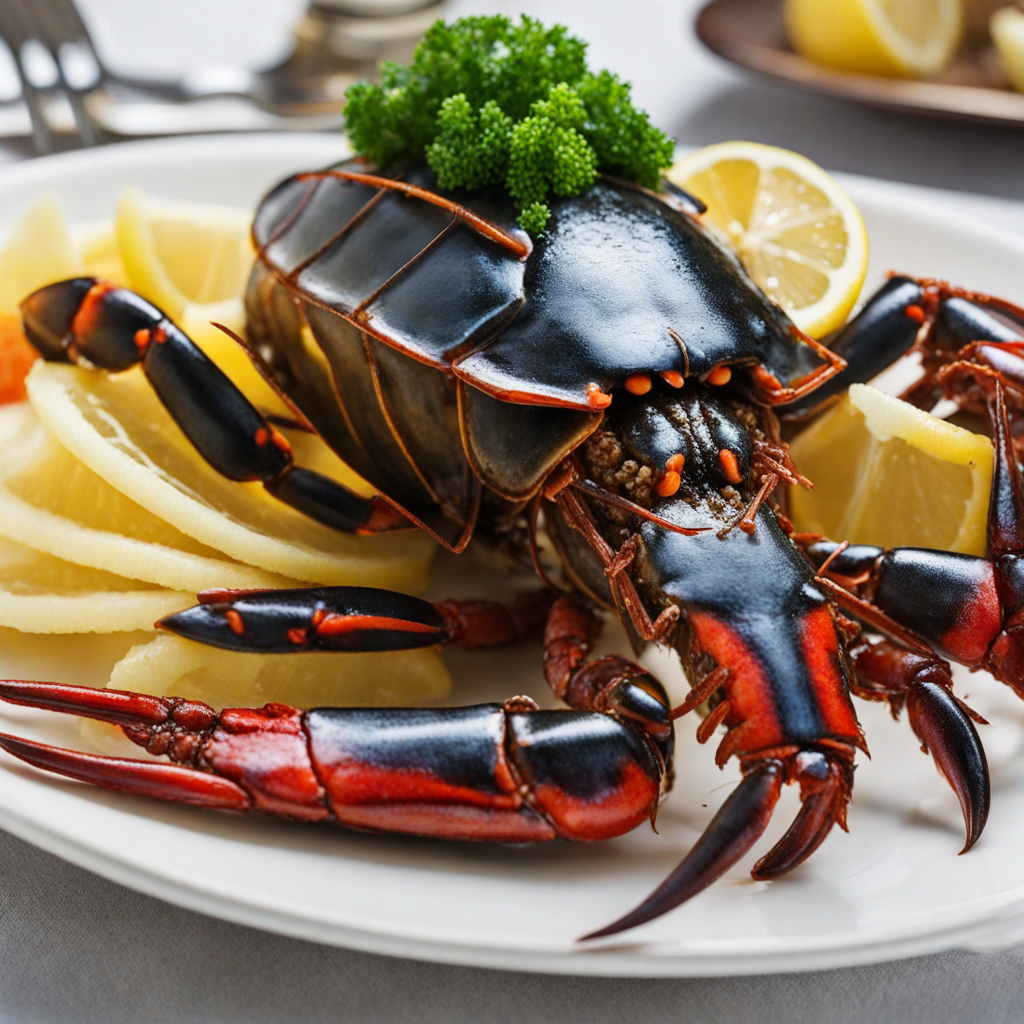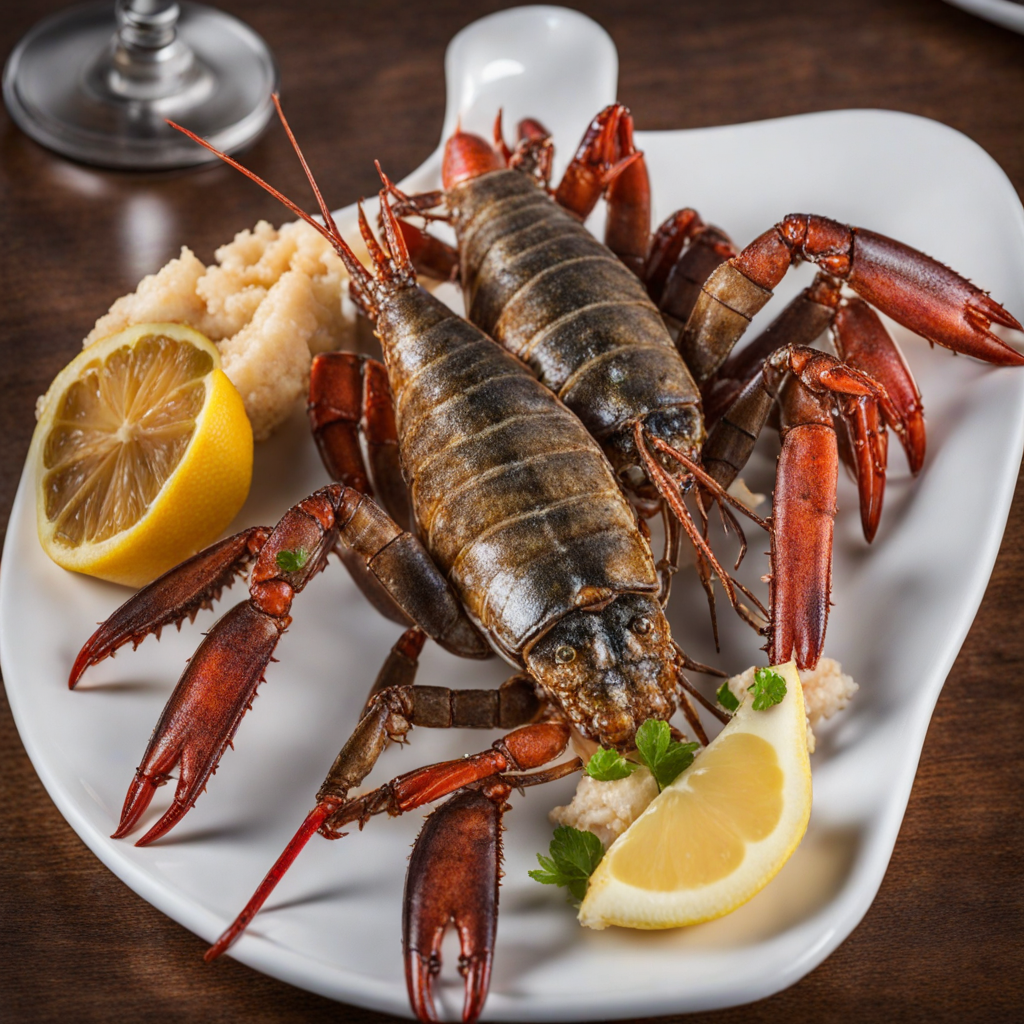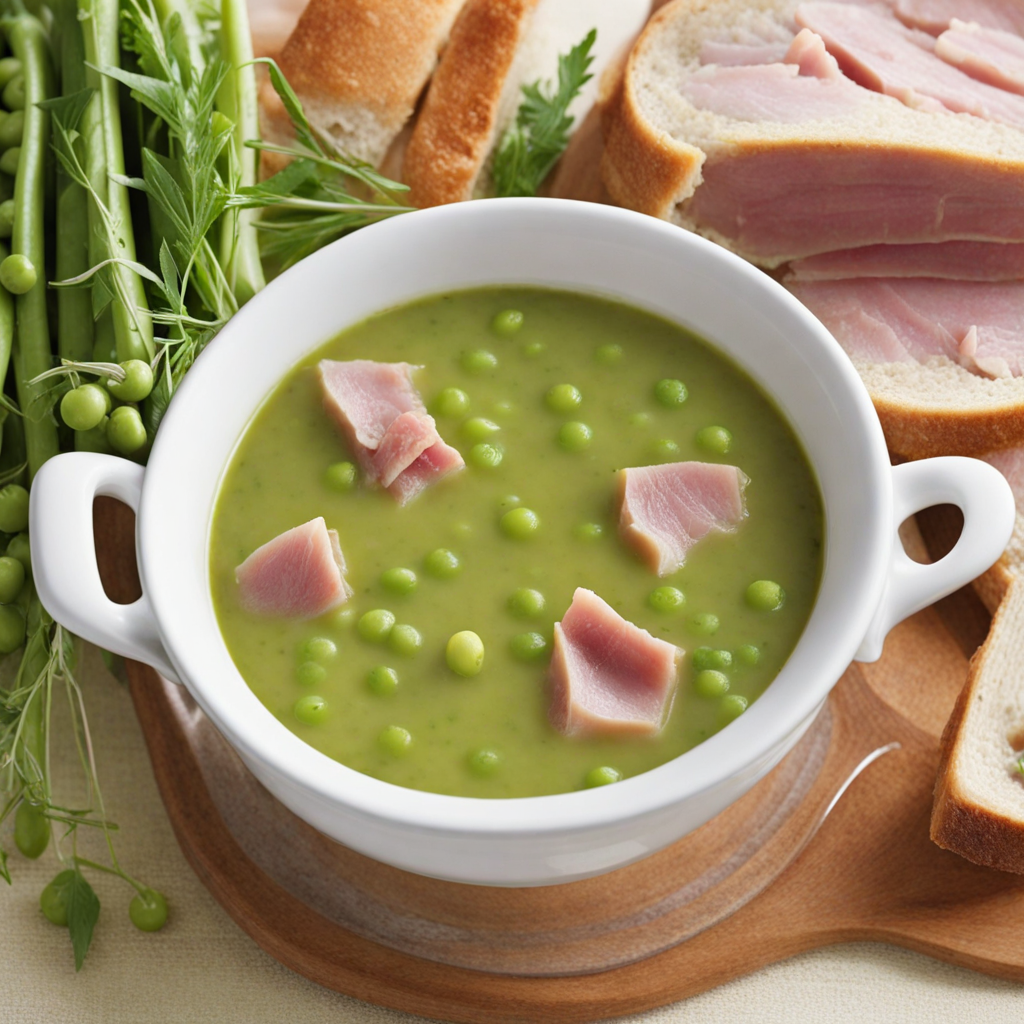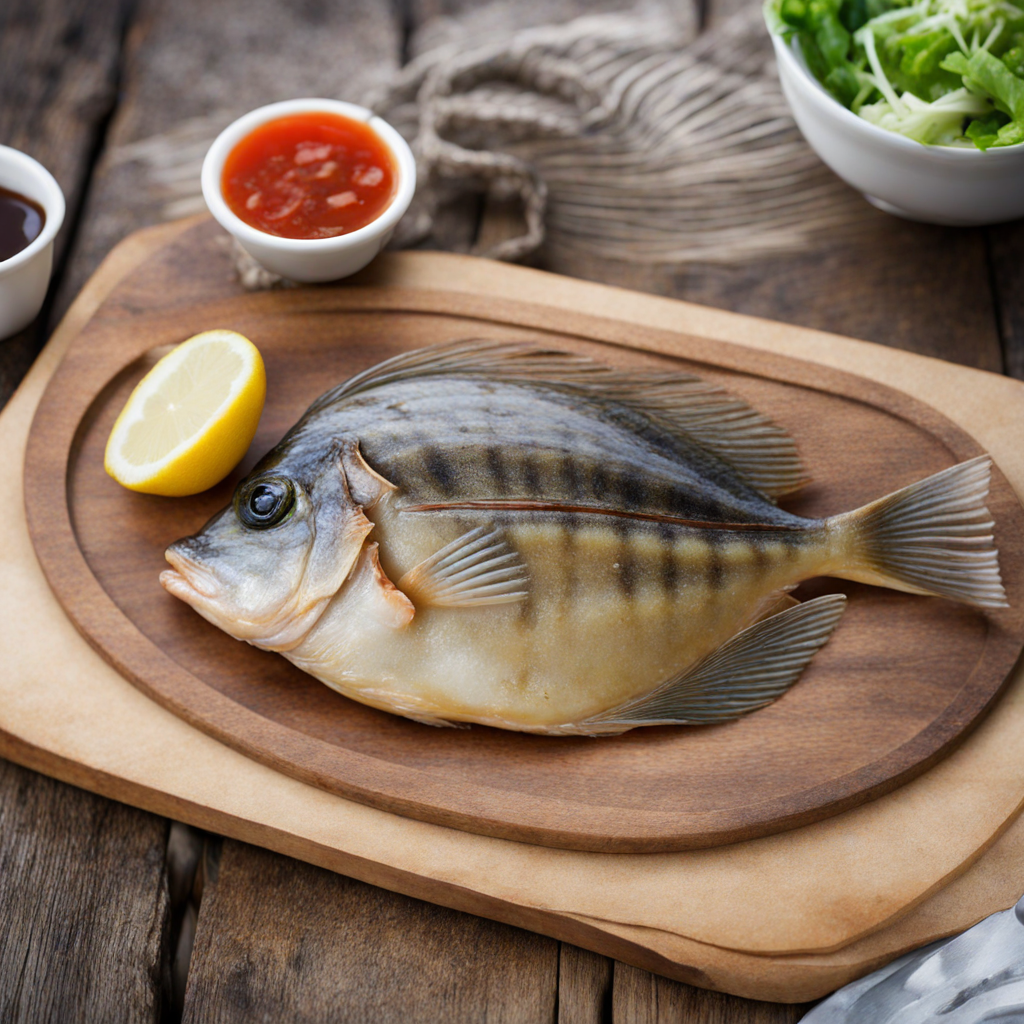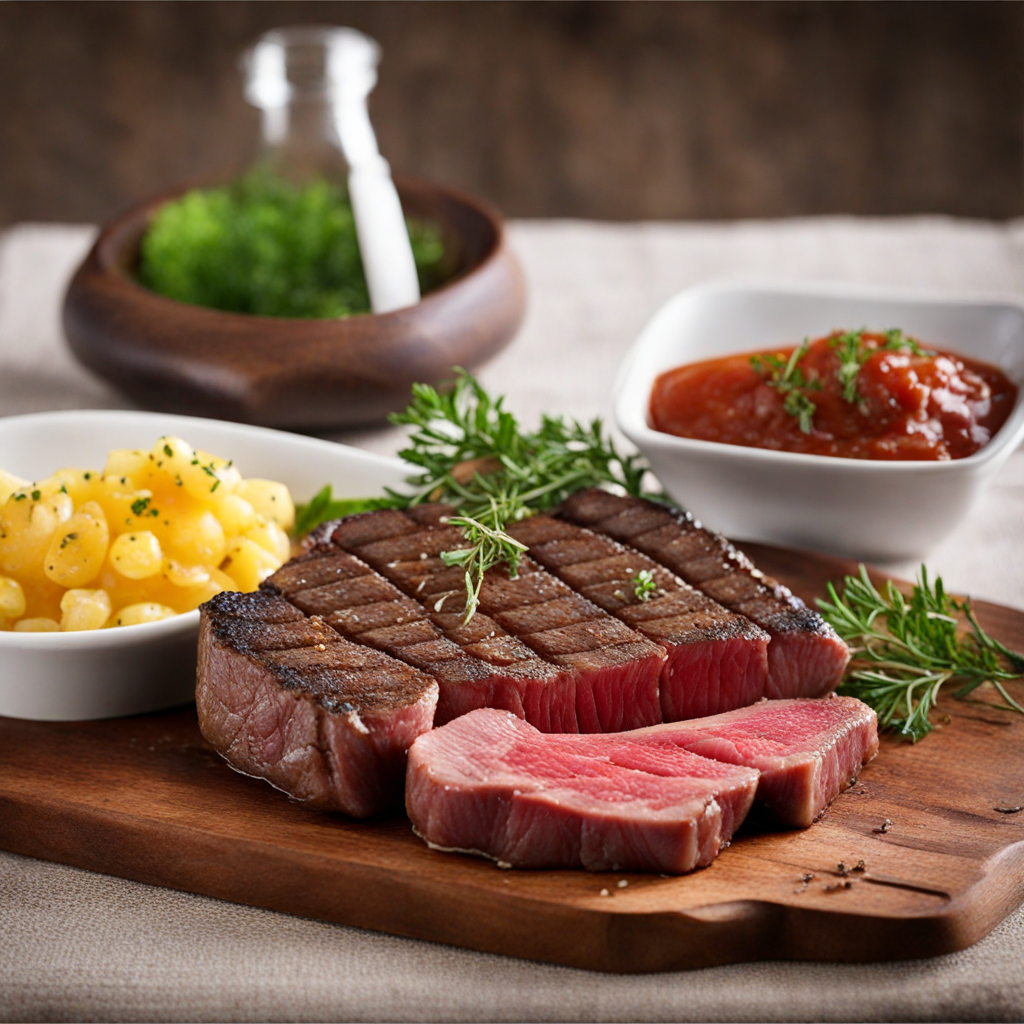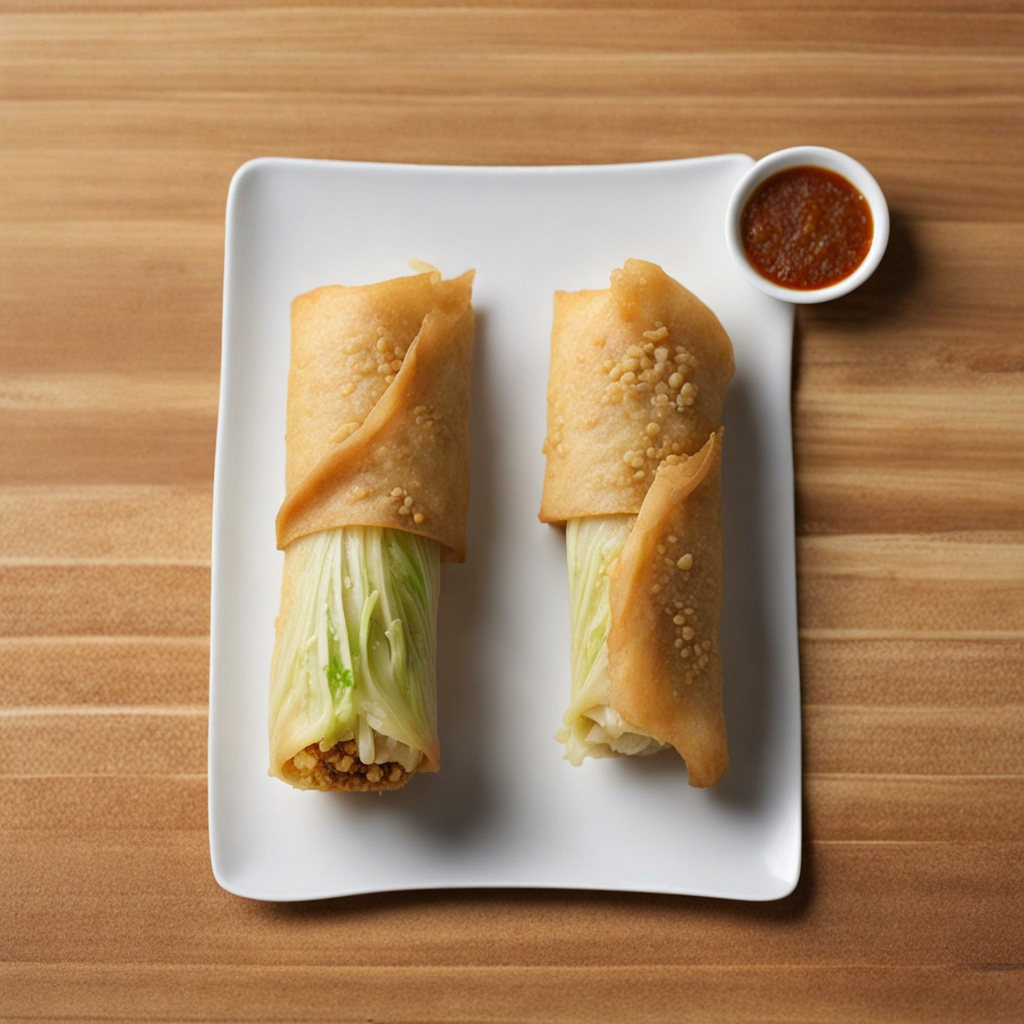Moreton Bay Bug
The Moreton Bay Bug, scientifically known as Thenus orientalis, is a type of slipper lobster found predominantly in the coastal waters of Australia, particularly in the Moreton Bay region of Queensland. This crustacean has a rich history tied to the indigenous peoples of Australia, who have long recognized its culinary potential. Traditionally, the indigenous communities would harvest these creatures for food, appreciating their sweet, succulent meat. As European settlers arrived, the Moreton Bay Bug emerged as a delicacy, gaining popularity among both locals and tourists alike. The flavor profile of the Moreton Bay Bug is one of its most enticing features. The meat is renowned for its delicate sweetness, often compared to that of a lobster or prawn, but with a unique texture that is tender yet firm. The flavor is subtly briny, capturing the essence of the ocean while remaining mild enough to allow for various culinary interpretations. Its flesh is creamy white with a hint of a pinkish hue, making it visually appealing as well as delicious. Preparation of the Moreton Bay Bug is relatively straightforward, which enhances its natural flavors. Commonly, the seafood is split in half lengthwise, exposing the tender meat. It can be grilled, steamed, or baked, with many chefs opting for minimal seasoning to let the intrinsic flavors shine. A simple marinade of olive oil, garlic, and lemon juice complements the bug without overpowering it. Grilling the meat is particularly popular, as it imparts a slight char that enhances its sweetness.
How It Became This Dish
## The Moreton Bay Bug: A Delicious Journey Through Time Introduction The Moreton Bay bug (Thenus orientalis) is a fascinating crustacean native to the waters off Australia. Known for its sweet, succulent flesh and distinctive appearance, this creature has become a culinary delight cherished by many. Its history is deeply intertwined with the cultural identity of coastal communities in Australia, making it more than just a seafood delicacy; it is a symbol of the region's rich maritime heritage. Origins and Habitat The Moreton Bay bug is a type of slipper lobster, belonging to the family Scyllaridae. It is predominantly found in the warm waters of the Indo-Pacific region, particularly around Australia, New Zealand, and Southeast Asia. The name "Moreton Bay bug" derives from Moreton Bay, a large bay located off the coast of Queensland, Australia, where these crustaceans thrive among the rocky reefs and sandy bottoms. This species is characterized by its flattened body, large antennae, and a hard shell that can vary in color from a brownish hue to a vibrant orange. Unlike its more famous relatives, the lobster, the Moreton Bay bug lacks large pincers, which gives it a unique appearance. It is typically found at depths of 10 to 60 meters, where it feeds on small fish and invertebrates. Cultural Significance The Moreton Bay bug holds a special place in the culinary traditions of Australia, particularly in Queensland. Indigenous Australian communities have long utilized marine resources for sustenance, and although the Moreton Bay bug may not have been a primary food source for Indigenous peoples, their deep connection to the ocean has shaped the way seafood is viewed in Australian culture. European settlers, arriving in the late 18th and early 19th centuries, contributed to the popularity of the Moreton Bay bug. The burgeoning fishing industry began to recognize the potential of this crustacean, leading to its incorporation into local cuisine. By the mid-20th century, the Moreton Bay bug had become a sought-after delicacy, celebrated for its sweet flavor and tender texture. Its appeal quickly spread beyond the shores of Queensland, becoming a staple in seafood restaurants across Australia. Culinary Evolution Traditionally, the Moreton Bay bug was prepared simply, often grilled or steamed to preserve its natural sweetness. As culinary techniques evolved, so too did the methods of preparing this crustacean. Chefs began experimenting with various flavors and cooking styles, incorporating Asian influences and modern gastronomy into traditional recipes. One of the most popular methods of cooking Moreton Bay bugs today is to split them in half and grill them, often with a brush of garlic butter or a zesty marinade. This method not only enhances the flavor but also allows diners to appreciate the visual appeal of the crustacean, with its vibrant colors revealed in all their glory. Moreover, the Moreton Bay bug has found its way into a variety of dishes, from pastas and risottos to salads and tacos. The versatility of this ingredient has made it a favorite among chefs looking to elevate their seafood offerings. It is often paired with complementary flavors such as citrus, herbs, and spices, further showcasing its adaptability in the kitchen. Economic Impact and Sustainability The rise in popularity of the Moreton Bay bug has had significant economic implications for the fishing industry in Australia. Commercial fishing operations have developed around the harvesting of these crustaceans, leading to increased demand and, consequently, concerns about sustainability. Efforts have been made to ensure responsible fishing practices, with regulations in place to manage stocks and maintain the ecological balance of marine environments. The Australian government, alongside various environmental organizations, has initiated programs aimed at promoting sustainable fishing methods, which include limits on catch sizes and the establishment of marine protected areas. Additionally, aquaculture has emerged as a viable alternative to wild harvesting. Farmers have started cultivating Moreton Bay bugs in controlled environments, reducing pressure on wild populations while meeting consumer demand. This shift towards sustainable practices reflects a growing awareness of the importance of preserving marine ecosystems for future generations. The Moreton Bay Bug in Modern Cuisine Today, the Moreton Bay bug is a beloved ingredient in both traditional and contemporary Australian cuisine. It has gained recognition not only for its flavor but also for its nutritional value; it is low in fat and high in protein, making it an appealing option for health-conscious consumers. In recent years, the Moreton Bay bug has also found a place in international cuisine, with chefs around the world incorporating it into their menus. Its unique flavor profile and texture have made it a popular choice for fusion dishes, blending Australian culinary traditions with influences from Asia, Europe, and beyond. Food festivals and seafood showcases frequently feature Moreton Bay bugs, celebrating their unique qualities and the local fishing communities that bring them to market. These events not only promote the crustacean but also foster a sense of community among chefs, fishermen, and consumers, reinforcing the cultural significance of the Moreton Bay bug as a symbol of Australian coastal heritage. Conclusion The Moreton Bay bug is far more than just a crustacean; it represents a rich tapestry of history, culture, and culinary evolution. From its origins in the warm waters of Australia to its status as a sought-after delicacy, this seafood treasure has captured the hearts and palates of many. As we look to the future, the importance of sustainability and responsible fishing practices will be crucial in ensuring that the Moreton Bay bug continues to thrive in its natural habitat. Through a combination of tradition and innovation, this beloved crustacean will undoubtedly remain a key player in Australia’s culinary landscape for generations to come. Whether enjoyed at a seaside restaurant or cooked at home, the Moreton Bay bug is a testament to the rich maritime heritage and gastronomic creativity that define Australian cuisine.
You may like
Discover local flavors from Australia


